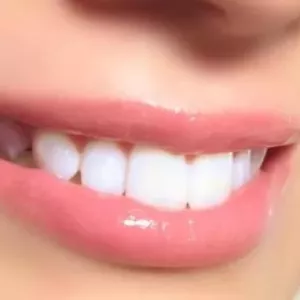كيفية بناء محفظة استثمارية متنوعة بأمان

مقدمة
في عالم المال، لا شيء أكثر أهمية من توزيع المخاطر. من هنا جاءت فكرة تنويع المحفظة الاستثمارية، وهي استراتيجية يستخدمها المستثمرون الناجحون لحماية رؤوس أموالهم وتحقيق أرباح مستقرة على المدى الطويل. سواء كنت مبتدئًا في عالم الاستثمار أو تمتلك خبرة سابقة، فإن بناء محفظة استثمارية متنوعة يعد من أهم خطوات النجاح المالي.
في هذا المقال، سنرشدك خطوة بخطوة إلى كيفية بناء محفظة استثمارية قوية، متوازنة وآمنة، تجمع بين العوائد والنمو والحماية من تقلبات السوق.
ما هي المحفظة الاستثمارية؟
المحفظة الاستثمارية هي مجموعة من الأصول المالية التي يمتلكها المستثمر. وتشمل هذه الأصول عادة:
-
الأسهم
-
السندات
-
العقارات
-
الذهب
-
الصناديق المشتركة
-
العملات الرقمية
-
النقد أو حسابات التوفير
الهدف من المحفظة هو تحقيق أقصى عائد ممكن مقابل أقل مستوى من المخاطر، من خلال توزيع الأموال على عدة أدوات استثمارية.
لماذا يجب تنويع محفظتك الاستثمارية؟
1. تقليل المخاطر
عندما تستثمر في أكثر من نوع من الأصول، فإن خسارة أحدها قد تُعوّض بمكاسب من نوع آخر. هذا يقلل من تقلب قيمة المحفظة.
2. تحقيق التوازن
كل أصل استثماري يتفاعل مع السوق بطريقة مختلفة. التنوع يسمح لك بالاستفادة من فترات النمو في أسواق معينة، وتجنب الخسائر في أخرى.
3. الاستقرار على المدى الطويل
المستثمرون الذين يمتلكون محافظ متنوعة يحققون عادة عوائد أكثر استقرارًا وأمانًا مقارنة بمن يضعون أموالهم في نوع واحد فقط.
خطوات بناء محفظة استثمارية متنوعة
1. تحديد أهدافك المالية
قبل البدء، اسأل نفسك:
-
ما هو هدفي من الاستثمار؟ (التقاعد، شراء منزل، تعليم الأبناء…)
-
ما هي المدة الزمنية للاستثمار؟ (قصيرة، متوسطة، طويلة الأجل)
-
ما هي درجة المخاطرة التي أستطيع تحملها؟
2. تخصيص الأصول (Asset Allocation)
قم بتقسيم أموالك على فئات مختلفة من الأصول، مثلاً:
-
50% في الأسهم (للنمو)
-
20% في السندات (للاستقرار)
-
15% في الذهب أو السلع (للحماية من التضخم)
-
10% في العقارات أو الصناديق العقارية
-
5% نقدًا للطوارئ
هذا مجرد مثال، ويمكنك تعديله حسب أهدافك ودرجة المخاطرة.
3. اختيار الأدوات المناسبة
اختر الأدوات المالية التي تناسب كل فئة. مثلاً:
-
في الأسهم: اختر شركات مستقرة (Blue Chip) أو صناديق المؤشرات (ETFs)
-
في السندات: يمكنك اختيار سندات حكومية أو سندات شركات
-
في الذهب: يمكنك شراء ذهب فعلي أو الاستثمار في صناديق ذهب رقمية
-
في العقارات: يمكنك الاستثمار مباشرة أو عبر REITs (صناديق الاستثمار العقاري)
4. مراجعة المحفظة بانتظام
الأسواق تتغير باستمرار، لذلك يجب أن تراجع محفظتك كل 6 أشهر أو سنة لإعادة التوازن وإزالة الاستثمارات الضعيفة.
أخطاء يجب تجنبها عند بناء المحفظة
1. وضع كل المال في أصل واحد
هذا يزيد من احتمال الخسارة في حال تدهور أداء هذا الأصل.
2. التسرع في اتخاذ القرارات
الاستثمار يحتاج إلى صبر وتحليل، وليس قرارات عاطفية أو مستعجلة.
3. تجاهل تنويع الجغرافيا
لا تقتصر على سوق واحد (مثل السوق المحلي)، بل نوّع بين الأسواق العالمية أيضًا.
خاتمة
بناء محفظة استثمارية متنوعة هو فن وعلم في آن واحد. لا تحتاج إلى أن تكون خبيرًا ماليًا لتبدأ، ولكنك تحتاج إلى وعي، تخطيط، وصبر. كلما كانت محفظتك موزعة بذكاء، زادت فرصك في تحقيق أهدافك المالية بأمان وثقة. ابدأ اليوم، حتى ولو بمبالغ بسيطة، فكل خطوة نحو التنويع هي خطوة نحو الحرية المالية.
الكلمات المفتاحية (Keywords):
محفظة استثمارية، تنويع الاستثمار، بناء محفظة استثمارية، الاستثمار الآمن، الاستثمار الشخصي، استثمار مبتدئين، الأسهم، السندات، صناديق الاستثمار، الذهب، إدارة المخاطر، تنويع الأصول، تحقيق دخل ثابت.







